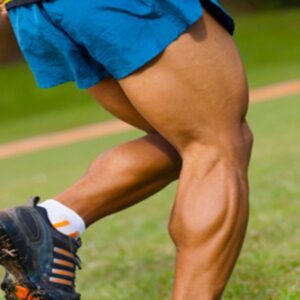The Calves are one of the most difficult muscle groups to grow, but with the right training, you can develop strong and defined calves. In this article, we will discuss the best exercises for calf training, as well as some tips for getting the most out of your workouts.
If you want to train your calves effectively and grow them up as before, there are a few things you need to keep in mind. “First, the calves are a slow-twitch muscle group, which means that they respond best to high-rep, low-weight training. Second, you need to focus on exercises that target both the gastrocnemius (the larger muscle on the back of the calf) and the soleus (the smaller muscle on the bottom of the calf)”.
The calves are one of the most difficult muscle groups to train, but with the right exercises and routine, you can get them growing easily. In this article, we will profundily discuss the best exercises for calves you can add to your calves training routine, how to perform them correctly, and how to create a calf training routine that will help you achieve your goals.
The Anatomy of the Calves
The calves are made up of two main muscles: the gastrocnemius and the soleus. The gastrocnemius is the larger of the two muscles and is responsible for the majority of the calf’s size. The soleus is located underneath the gastrocnemius and is responsible for providing stability and support.
 The Best Exercises for Calf Training
The Best Exercises for Calf Training
There are many different exercises that you can do to train your calves. Some of the most effective exercises include:
- Standing Calf Raises: This is the most basic calf exercise and can be done with or without weight. To do a standing calf raise, stand with your feet shoulder-width apart and your toes pointing forward. Slowly raise up onto your toes until you feel a contraction in your calves. Lower back down to the starting position and repeat.
- Seated Calf Raises: This exercise is similar to the standing calf raise, but it is done while sitting on a bench. To do a seated calf raise, sit on a bench with your knees bent at 90 degrees and your feet flat on the floor. Slowly raise up onto your toes until you feel a contraction in your calves. Lower back down to the starting position and repeat.
- Donkey Calf Raises: This exercise is a more challenging variation of the standing calf raise. To do a donkey calf raise, kneel on the floor with your hands on a bench behind you. Rest your heels on a weight plate or step and slowly raise up onto your toes. Lower back down to the starting position and repeat.
- Toe Raises: This exercise is a good way to isolate the soleus muscle. To do a toe raise, stand with your feet shoulder-width apart and your toes pointing forward. Slowly raise up onto your toes, keeping your heels on the ground. Lower back down to the starting position and repeat.
Check Out Our List Of The Best Supplements For Building Muscle, Shredding Muscle, Recovery, And Great Health, and Wellness Products! Purchase IFBNewsfeed.Org‘s Apparels Here: IFBNewsfeed.Org
Tips for Getting the Most Out of Your Calf Workouts
Here are a few tips to help you get the most out of your calf workouts:
- Focus on slow, controlled movements. This will help you to target the muscle fibers more effectively.
- Don’t bounce at the top of the movement. This can put unnecessary stress on your joints.
- Use a weight that is challenging but allows you to maintain good form.
- Do multiple sets of each exercise. Aim for 3 sets of 15-20 repetitions.
- Vary your exercises. This will help to prevent boredom and plateaus.
- Be patient. It takes time and consistency to build strong and defined calves.
Additional Calves Training Tips
- You can also train your calves by doing activities that involve a lot of calf raises, such as running, hiking, and stair climbing.
- If you are new to calf training, start with light weights and gradually increase the weight as you get stronger.
- Don’t neglect your stretching routine. Stretching your calves after your workouts will help to prevent injuries and improve your flexibility.
- If you have any pain or discomfort during your calf workouts, stop immediately.
I hope this article has been helpful. If you have any further questions, please feel free to ask.
 Wrapping Up
Wrapping Up
Training your calves can be challenging, but it is definitely worth it. Strong and defined calves will make your legs look more muscular and athletic. With the right training, you can achieve your calf goals.
More Exercises Content
- The “7 Best Quadriceps Exercises” To Boost Legs Strength, Stability, Endurance, And Build Up Insane Muscle Size
- Build Up Insane And Shredded Legs (Quads & Hamstrings) With These “5 Best Dumbbell Exercises”
- How To Develop Insane Calves: Here Are “The Best Exercises” For Building Up Muscular And Shredded Calves

- $5.95 Ground Shipping On Any Purchase In The US! – Shop Now!
- Free Shipping on US orders over $49 USD and 5 lbs or less at eVitamins.com!
For More News And Daily Updates, Follow IFBNewsfeed.Org on Facebook, Twitter, and Instagram. Comment, Like, And Share With Everyone Who May Need To Be Updated With The Most Recent Fitness/Bodybuilding/Powerlifting And CrossFit News.







